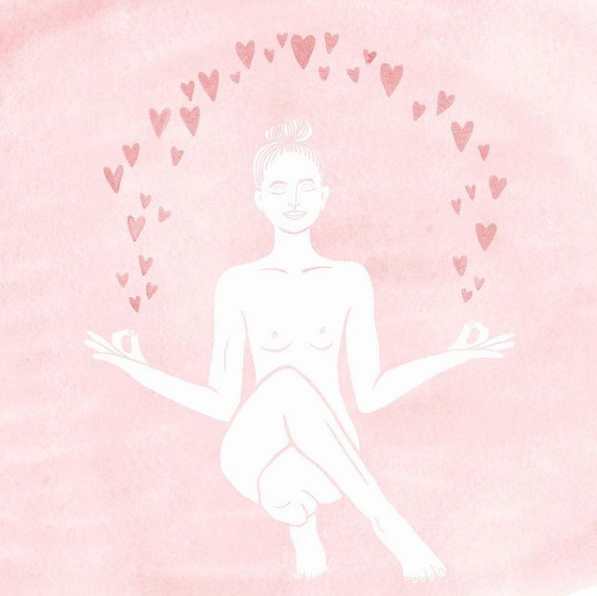Coping with change moved my meditation practice from haphazard to habitual.
My meditation practice began seven years ago during my yoga teacher training, and I went on a weekend-long retreat in an effort to rekindle my lost meditation practice three years ago.
I remember the first afternoon. About 35 people gathered in a large room with the teacher at the front. The room had individual spots created and pre-set for each person with a yoga mat, a meditation chair, and a blanket. The windows were open in the room, letting in the warm fall air and sounds from the wind, birds chirping, and insects humming to the walking and chattering of people attending other retreats.
In this room over the weekend, I meditated twice a day—mixed in with some guidance and lessons for how to meditate. It was a wonderful break from my typical day-to-day, but it did not reignite my meditation practice.
Rather, I left the retreat with my seed mantra, a one-syllable sound that can be used in meditation practice, and the following guidelines:
1. Meditation should be practiced for about 20 minutes twice a day.
2. Try to exercise an hour or two before meditating so that your body is ready to relax. Exercise can mean a walk or gentle movement and stretching.
3. Ensure you’ve eaten before meditating so that your mind isn’t distracted by hunger, but don’t eat too close to meditating so that your body isn’t solely focused on digesting your food.
Consequently, when I re-entered my reality, I never seemed to find 20 minutes that fit the exercise and food stipulations. The weekend became a faded memory, and my meditation practice became haphazard and almost non-existent.
Fast forward to this last year. From COVID-19 arising in March to an overseas move being canceled and my spouse’s diagnosis of cancer, 2020 was one change after another.
When faced with life-altering change, I am often calm, cool, and collected on the outside, but my inner thoughts race and swirl causing me to lose my grounding. The cycle goes like this. A life-altering change happens. I cling to my normal routine thinking it will help me accommodate the new challenges. By clinging to both my normal routine and making minor adjustments to the change, I end up taking on too much. Eventually, I have an “aha” moment. I realize I need to let go of control and flow in harmony with the change.
Four months ago I was stuck in a period of wallowing about the change with moments of anger while trying to hold on to the past. I knew I needed something to help jump-start me to move toward acceptance. Thankfully, the universe knew my haphazard, wavering, and almost non-existent meditation practice was the answer.
I remembered that meditation helps me feel at peace with change. It helps me approach moments calmly and confidently, and it helps me feel connected to my inner truth and open to new possibilities.
I decided to throw out the rules from that retreat. I set a goal to meditate every morning with no time, movement, or eating constraints. I thought if meditation practice makes me feel all those things, it shouldn’t matter how I meditate—what matters is that I do it.
Since making that choice, for 117 days now, I have meditated every morning.
I customize each morning meditation practice to work for me. I find a comfortable position and usually sit cross-legged on my carpeted floor. Occasionally, I sit in a chair with my feet pushing into the floor below them. Sometimes I have my essential oil diffuser sending scents of citrus, lavender, or a combination of eucalyptus and peppermint. I might have a warm cup of ginger tea waiting for me when I finish.
Almost always, I use my n.o.w. Tone Therapy™ speakers or start a guided meditation, rather than meditating without guidance. The speakers play tones that create calming pitches set to create a deep relaxation within three minutes. With guided meditation, the narrator softly, sweetly, slowly leads the meditation with reminders throughout to let go of thoughts that may arise.
Regardless of the exact morning setting, once I’ve settled into my position, I start by focusing on my breath. As I intentionally listen to my inhales and exhales entering and exiting my body, the ambient noises fade around me. Even my dog’s high-pitched bark in the next room fades as if she was outside. I feel every muscle relax, and I hear my breath slow. As my focus connects to the meditation, the thoughts in my mind drift to the wayside. From three to five or twelve to eighteen minutes, I sit and meditate.
The universe was right to nudge me toward meditation. An average of three minutes of meditation for 117 days has worked magic. It has helped me accept all the changes around me and become more grateful for the joy that I have each day. Meditation provides clarity to the cloudiness and uncertainty that go hand in hand with change. When sitting in peacefulness and connecting to each moment, I intentionally quiet everything external in my mind. It balances stressors from life and allows me to focus on what I value.
Moreover, I am more fully aware of what can be difficult emotions, such as anxiety, sadness, anger, and frustration, that are often inevitable with change. Meditation allows me to recognize and process them effectively. Additionally, I can discern between the dreams that are in my heart and those that have been placed in my brain by false, external expectations. I couldn’t do this when first starting; but now, since I’ve practiced for almost a third of a year, I can stop, pause, and find a moment of love and joy anytime, anywhere.
I’m grateful to have rekindled my lost meditation practice. I know change is inevitable and all around, and I have a meditation routine that works for me.
3 Lessons to Learn from my experience:
- Throw out the rules, or at least bend them.
- Choose to make guidelines that work for you.
- Like everything in life, the right way is the way that works for you; meditation is no exception.
I choose to keep flowing with change and moving forward in life through the guidance of my custom meditation routine each morning.












Read 8 comments and reply